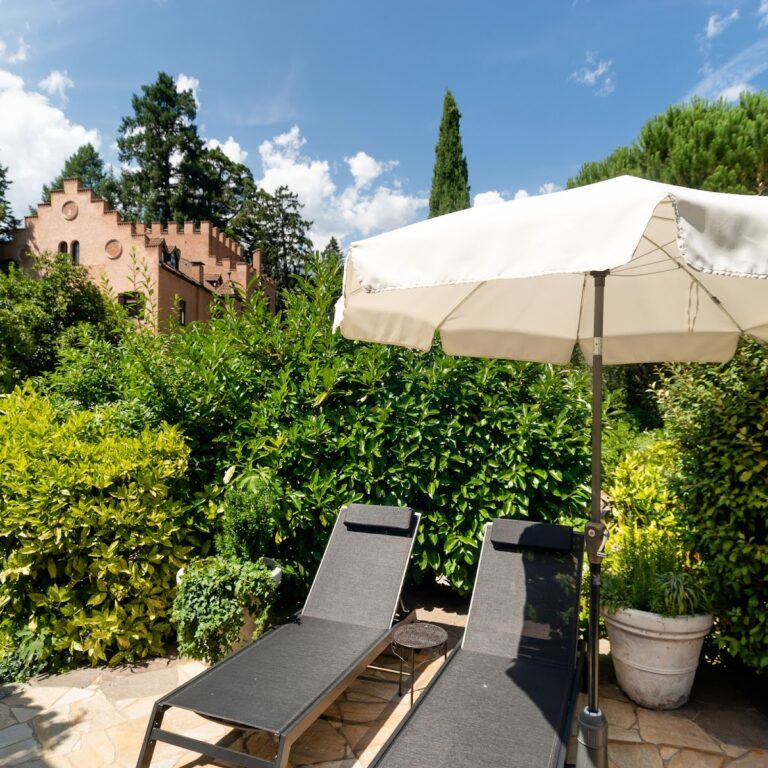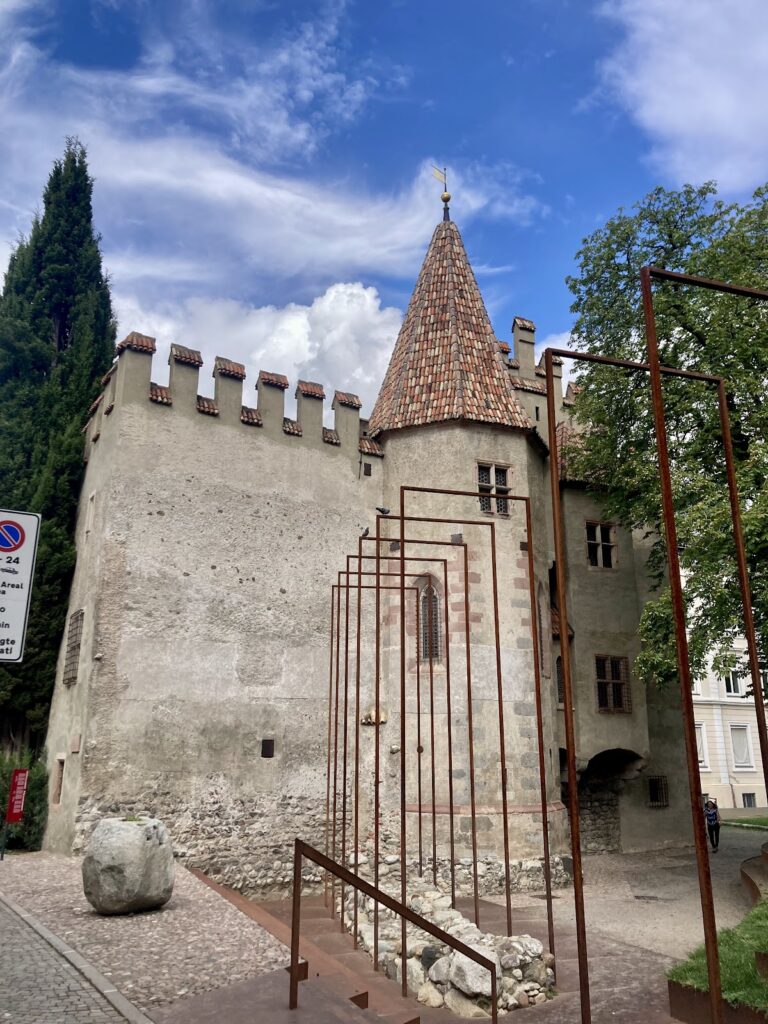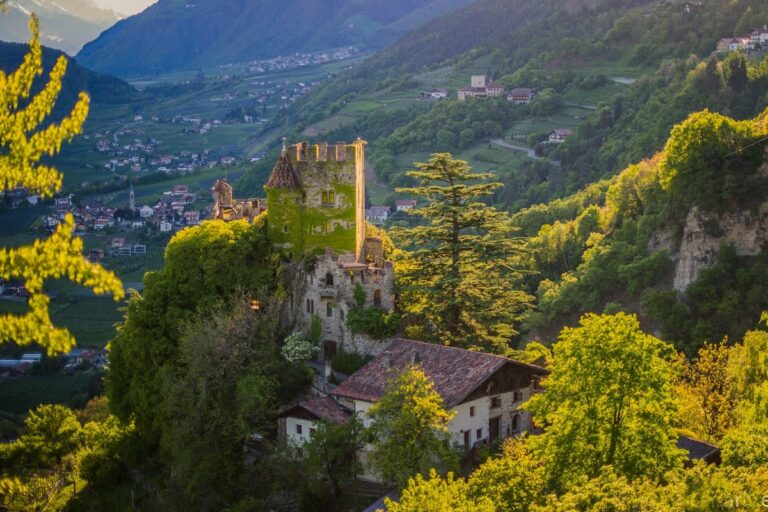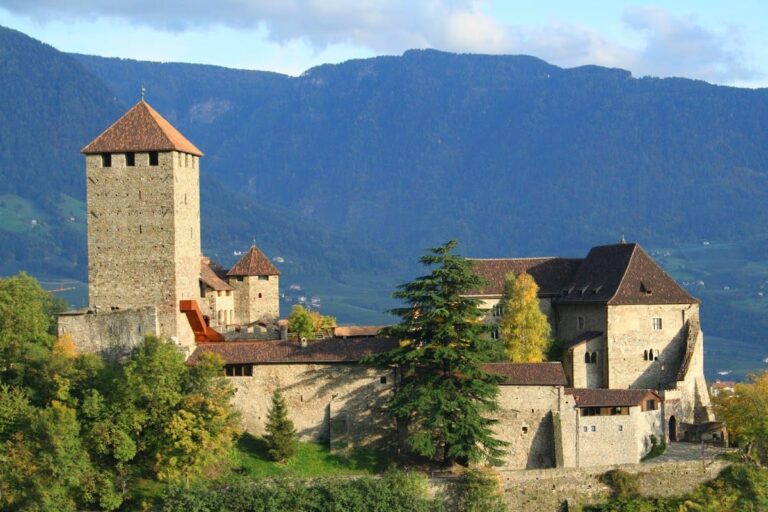Trauttmansdorff Castle: A Historic Fortress and Museum in Merano, Italy
Visitor Information
Google Rating: 4.8
Popularity: High
Google Maps: View on Google Maps
Official Website: www.trauttmansdorff.it
Country: Italy
Civilization: Unclassified
Remains: Military
History
Trauttmansdorff Castle is situated in the town of Merano, within modern Italy. Its origins trace back to a medieval fortress constructed around the year 1300 by local noble families, marking the site’s early significance in regional defense and residence.
The earliest recorded mention of the fortress dates to 1327, when it was known as Neuberg Fortress. Ownership changed hands among several noble lineages during the 14th and 15th centuries. Among these were the Angerheim family (from 1307 until around 1351 or 1354), followed by the Suppan until 1399. The Feigenstein family held it from 1400 to 1488 and were responsible for building the site’s first chapel. Subsequently, the Zwingenstein family controlled the castle until 1537, with interludes of stewardship by the Rästler family until 1514 and the Santner family until 1537. This period reflected the typical feudal transfers of property through inheritance and marriage.
In 1543 the castle was acquired by the Trauttmansdorff family, who initiated significant expansions under Franz von Trauttmansdorff. This family maintained possession until 1678, when their line ended. Ownership then passed to the Stachelburg family until 1729, followed by joint stewardship of the von Mamming and Mohr families.
The 18th century marked a period of decline for the property. Notably, in 1777, a tower collapse caused the destruction of the castle chapel. Political changes by the early 19th century led to Bavarian rule over the area, and in 1805 the fortress was sold to local farmers, reflecting a shift from noble estate to agricultural use.
In 1846, Count Joseph von Trauttmansdorff repurchased the castle, which was by then nearly in ruins. He expanded the structure and incorporated many neogothic design elements, transforming it into an important example of this architectural style in South Tyrol. Upon his death in 1870, the estate passed to Moritz von Leon, believed to be his illegitimate son.
The castle gained renewed prominence during the latter half of the 19th century when Empress Elisabeth of Austria chose it as a retreat in 1870 and again in 1889 for health reasons. She stayed with her daughters on the top floor, a connection that enhanced Merano’s reputation as a spa destination.
During the 1890s, Moritz von Leon sold the property to the Gyulay family, after which it transferred to Friedrich von Deuster. Von Deuster undertook restoration efforts, added orchards and gardens around the castle, and enlarged the eastern wing, including the addition of a hall with decorative features inspired by the rococo style.
The castle’s period of prosperity ended with the outbreak of World War I. After the war and the annexation of South Tyrol by Italy, the fascist regime confiscated the property, transferring it to the Opera Nazionale per i Combattenti and renaming it Castel di Nova. During World War II, the castle was used by the German Wehrmacht, indicating its continued strategic importance.
Following the war, the castle remained unoccupied for several decades. In 1977, ownership moved to the South Tyrolean provincial administration. A new chapter began in 1990 when the site was repurposed as the Touriseum, a museum dedicated to the history of tourism. The surrounding areas were developed into botanical gardens, which opened to the public in 2001.
Remains
The castle complex displays a layered architectural history, with construction phases spanning the Gothic, Romanesque, and Baroque periods. These correspond roughly to the original fortress built before the 14th century, expansions during the 1500s, and further modifications in the 1800s.
The oldest parts of the site consist of the fortified walls and defenses belonging to the 14th-century Neuberg Fortress. These strong stone walls enclose the north, south, and west sides of the complex, taking advantage of the surrounding natural barriers—a dense forest and steep terrain—to the east, which provided additional protection without the need for artificial fortifications.
The 19th-century enlargement by Count Joseph von Trauttmansdorff introduced neogothic architectural details. These include pointed arch windows and ornamental elements that added vertical emphasis and decorative complexity to the castle’s appearance, blending with the earlier structures while updating its style for the period.
The castle fçade reflects Romanesque architectural features, recognized by repetitive arrangements of windows and a variety of window shapes, including both rounded and pointed arches. These elements are complemented by contrasting roof forms and defensive structures that highlight the building’s evolving function over centuries.
Inside, the main hall features a Baroque ceiling mural, encircled by layered moldings and supported by pilasters made from marble, demonstrating the richness and craftsmanship typical of the period. Other interior rooms, known as the imperial chambers, contain an interplay of window styles combining both Romanesque rounded arches and Gothic pointed arches, illustrating the castle’s architectural evolution.
The castle estate covers about 12 hectares and includes an extensive network of paths stretching approximately seven kilometers, with a vertical elevation difference of 100 meters. The botanical gardens, developed around the castle grounds, are organized into four distinct zones: forest gardens, sun gardens, water and terrace gardens, and South Tyrolean landscapes.
Among the botanical collections, a rare Australian species, the Wollemia nobilis, stands out. Since 2006, the gardens have been the first in Italy to display this ancient conifer, known as a living fossil, attracting botanical interest for its rarity.
Today, both the castle and gardens remain well-preserved. The castle hosts the Touriseum, South Tyrol’s museum dedicated to the history and development of tourism, while the gardens continue to serve as a living collection showcasing diverse plant species carefully arranged to reflect various natural and cultural themes.










